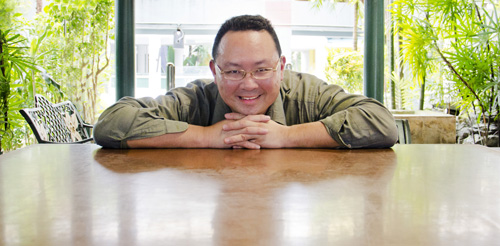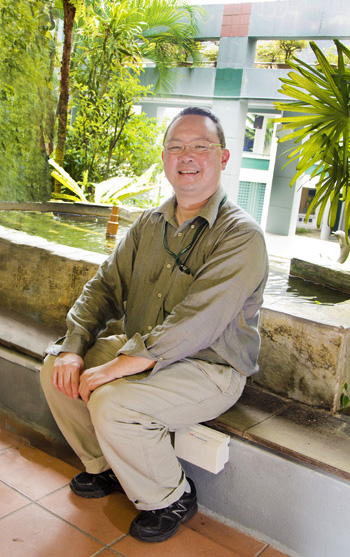Designing History
Making history come alive in the classroom is on every History teacher’s wishlist. Instead of bringing students back to the past (which is impossible anyway), a teacher from Raffles Girls’ School (Secondary) lets them make up their own games about History.

Even after teaching the subject for 19 years, Mr Tan Kok Wah constantly asks himself: “How do I make History interesting for students?”
“If you give them documents after documents to read, students will get bored,” he says. “They will say, ‘Tell me, what is in there for me?’”
While students can go on field trips to experience Geography concepts in real life, Kok Wah says that it is not the same for History. “I can’t bring my students back to BC (Before Christ)!”
What these students need in the History classroom is another kind of motivation. So, when a student suggested to Kok Wah that they play board games, he thought, why not?
Instead of buying games off the shelves for his students at Raffles Girls’ School (Secondary), Kok Wah decided to make it more challenging for them. He told his students to design their own games.
Self-designed Games
The end goal is not the game but to tell me, as you are designing, what were the processes, the thinking and the reflection that you went through?
– Tan Kok Wah, Raffles Girls’ School (Secondary)
His reason for doing that is simple: teachers and students have very different perspectives.
Get a teacher to design a game for students and the learning outcomes may not mean much to them. After all, teachers may not always know what students want and like to learn about.
Kok Wah explains that teachers often prefer games with closed systems such that “this and this must equal to that”. Students, on the other hand, prefer an open system with less structure. This gives them more room to explore on their own.
“You have to understand their mental model,” Kok Wah says. “You don’t want the game to be structured in such a way that when they play, there are too many fixed rules and steps.”
Get students to design games for each other, and the learning they gain from the experience may just exceed any learning outcomes achieved from playing commercial games.
Game Design in the Classroom
The students are given just 2 weeks to come up with a game design.
During the first lesson, Kok Wah introduces a History topic and related concepts to the class. Students are then given the liberty to choose an interesting part of what was taught for further examination.
Working in groups, students think of a game that can help their peers understand that particular historical concept better. For example, one group of students picked the topic of Japanese Occupation and came up with a board game based on the Ladder and Snake concept.
Their game design has to be based on sound principles, and so students do extensive research and come up with a literature review of game concepts.
And it doesn’t just stop there. Upon design completion, students have to run pilot tests of their game prototypes by asking their own friends and even families to play them and provide feedback.
There are different types of playing. I would say this is serious playing. It is fun, but it is hard fun.
– Kok Wah on his approach to game-based learning
Developing Critical Thinkers
“If you ask me whether the process is tedious, I would say yes. It is very painful for the students,” Kok Wah says. “It is actually harder than pen-and-paper tests.”
But such a challenge gives the RGS students a chance to exercise their critical thinking skills. In designing the games, they had to think like a designer and player. In the case of the Japanese Occupation game, the players could be Japanese, British or locals. Each would have a very different historical perspective.
 Because of this, the students learned that there will always be different interpretations of the same historical event. Although some of them felt unsettled by such ambiguity, Kok Wah thinks that this is precisely what students need to learn to thrive in today’s world.
Because of this, the students learned that there will always be different interpretations of the same historical event. Although some of them felt unsettled by such ambiguity, Kok Wah thinks that this is precisely what students need to learn to thrive in today’s world.
This part of the design process becomes very important to learning.
As Kok Wah told his students, “The end goal is not the game but to tell me, as you are designing, what were the processes, the thinking and the reflection that you went through?
“What have you understood from the design? The concepts of game design and the concepts of history – how did you infuse them together?”
Rather than model answers, the girls are given only guidance and coaching from their teacher. The collaborative element in designing games also helps these students foster a sense of belonging within the group they work in.
“There are different types of playing,” Kok Wah explains. “I would say this is serious playing. It is fun, but it is hard fun.”
And these are the kinds of hard fun that the girls welcome in their History classroom. As Kok Wah puts it, play is inherent in humans – to play is to learn.






